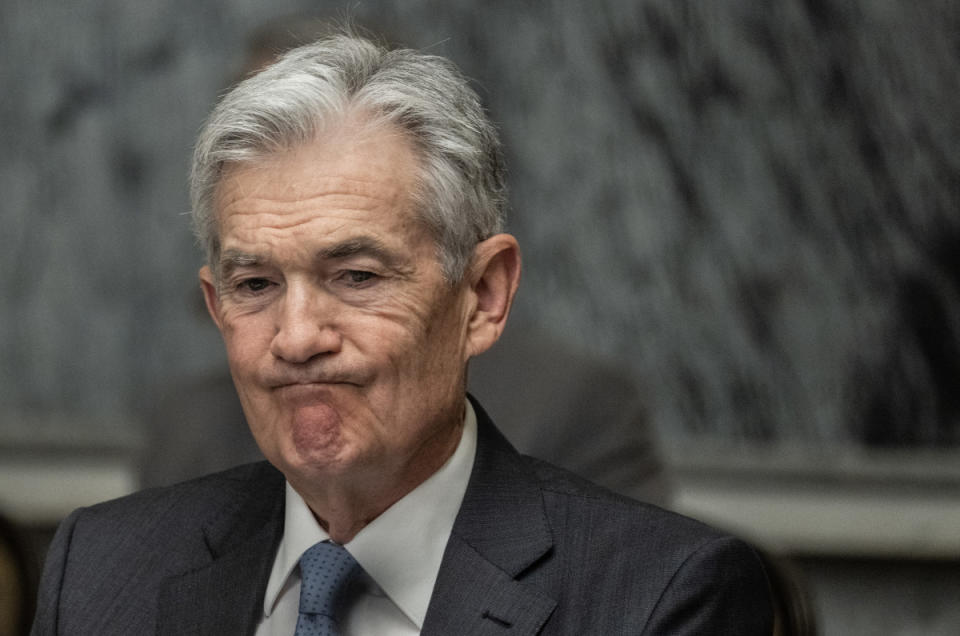Experts cite stocks to buy after Fed rate cut
From March 2022 through July 2023, the Federal Reserve raised interest rates 11 times.
Rate increases often hurt the economy by making borrowing more expensive. And that economic pain often depresses corporate earnings, pushing down stocks.
But that’s not what happened this time around. The economy proved resilient and the S&P 500 stock index has gained 30% since March 1, 2022. That’s not a huge gain, but it tops the average of the past 40 years.

ANDREW CABALLERO-REYNOLDS/Getty Images
In 2024 market participants have speculated about when the Fed would begin cutting interest rates. Now the time has come, with a 0.5-percentage-point reduction Sept. 18.
So what does that mean for stocks?
In 12 of the Fed’s 14 rate-cutting campaigns since 1929, the S&P 500 posted a positive return 12 months after the initial cuts, according to a Schwab report. The authors are Liz Ann Sonders, Schwab’s chief investment strategist, and Kevin Gordon, senior investment strategist.
The two exceptions occurred during recessions in 2001 and in 2007. “They may feel uncomfortably recent, but neither economic environment resembles today's,” the report explained.
“The former happened amid the dot-com implosion and the latter was precipitated by the subprime mortgage crisis.”
How rate cuts affect stock sectors
Let’s have a look at how Fed rate changes affect market sectors.
“Defensive sectors — essential industries that tend to be more resistant to economic uncertainty, such as health care and utilities — generally perform well when interest rates are rising,” the Schwab commentary said.
“Conversely, cyclicals — sectors that benefit from an accelerating economy, such as consumer discretionary and industrials — have greater potential when rates drop,” the report said.
Related: Fed delivers on big rate cut, signals focus on cooling job market
So does that mean a shift to cyclicals is on the horizon?
“This is another market dynamic that depends on how fast the Fed is cutting rates,” the report said.
Based on analysis from Ned Davis Research, cyclicals have often done best when the Fed enters a period of gradual rate decreases, as is expected in this cycle, Schwab said.
Jefferies stock-pick list includes Alphabet
Meanwhile, Jefferies recently published a list of stocks, as cited by CNBC, that will benefit from rate cuts.
They include Internet search giant Alphabet (GOOGL) , shoe company Crocs (CROX) , banking titan JP Morgan Chase (JPM) , oil producer Marathon Oil (MRO) , and glass-fiber maker Owens-Corning (OC) .
“From a style perspective, value and yield would work the best in case of a soft landing, along with autos, energy, telecom and banks,” Desh Peramunetilleke, Jefferies’s global head of quantitative strategy, wrote in a commentary cited by CNBC. “Yield” means dividend stocks.
Related: Goldman Sachs issues stocks forecast for next year
The Fed has been trying to enable a soft landing, which means slowing inflation without a recession. The path of stocks in coming months will likely depend on what happens to the economy.
“The key determinant of market performance [after past rate cuts] has been whether the economy avoided recession,” Seema Shah, chief global strategist at Principal Asset Management, wrote in a commentary cited by Barron’s.
More stock picks, including IBM, from experts
The following stocks could benefit from a soft landing, according to Barron’s writer Paul LaMonica.
It’s Dayforce (DAY) , a provider of human-resources-management software; tech stalwart IBM (IBM) ; software giant Oracle (ORCL) ; French oil producer TotalEnergies (TTE) ; and retail behemoth Walmart (WMT) .
Fund manager buys and sells:
In June Morningstar listed five stocks to buy before the Fed began cutting rates. And they may thrive going forward as well.
The group includes cellphone-tower real estate investment trust Crown Castle (CCI) , retailing REIT Realty Income (O) , utilities WEC Energy (WEC) and Entergy (ETR) , and U.S. Bancorp (USB) .
The author owns shares of Alphabet, JPMorgan Chase, Walmart, Realty Income and U.S. Bancorp. He also owns Oracle bonds.
Related: Veteran fund manager who correctly forecast stock drop updates outlook
